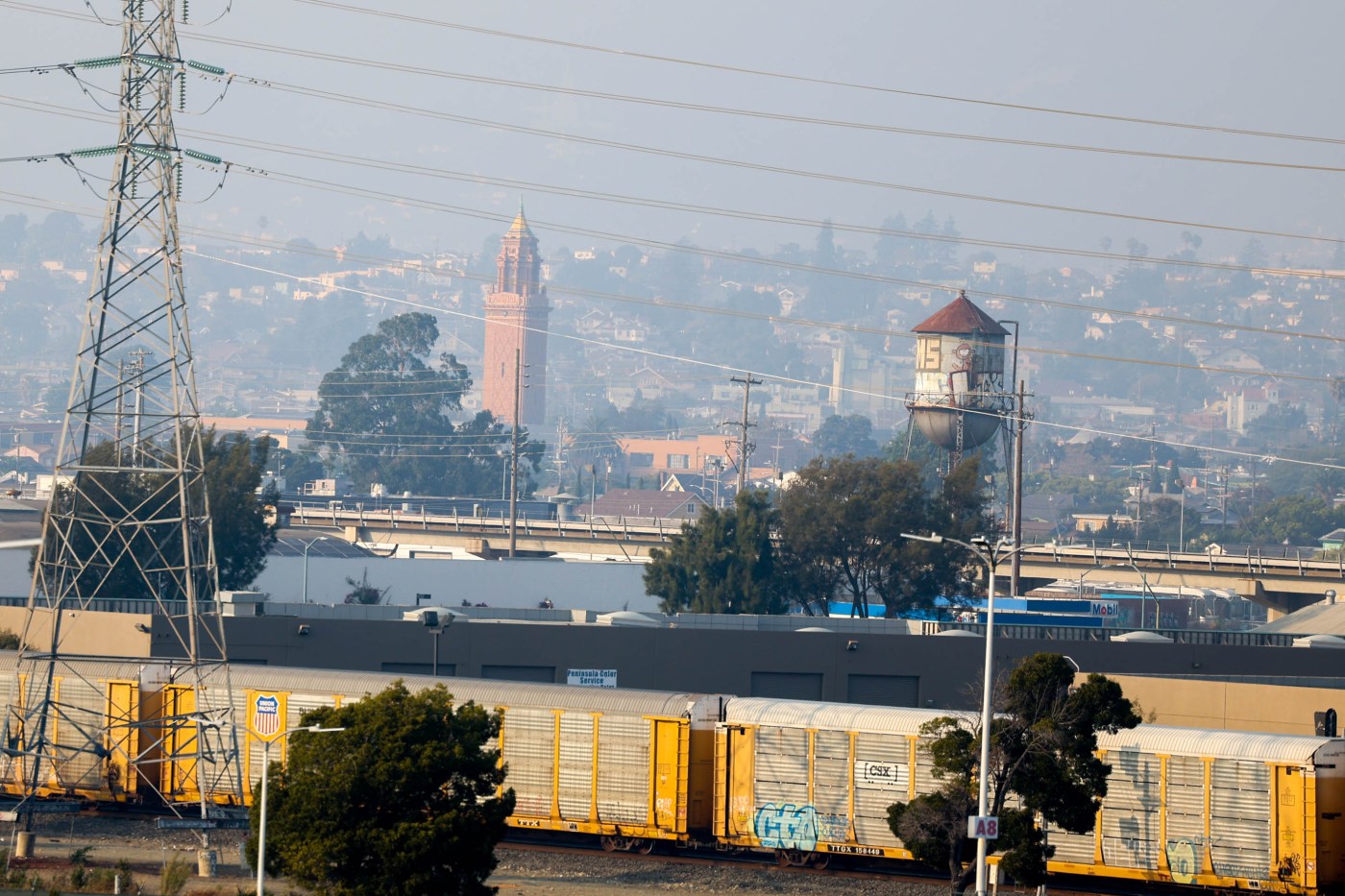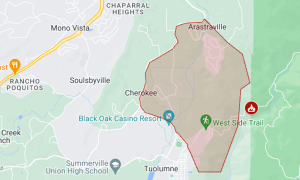Officials extended an air quality advisory for the Bay Area through Saturday as smoke from nearby wildfires remained in the region heading into the weekend.
The Bay Area Air Quality Management District first issued an advisory on Thursday, set to last into Friday. While air quality improved Friday morning, according to BAAQMD spokesperson Aaron Richardson, experts were unsure how the smoke would move through the day and into the night. No Spare the Air alert is in effect.
The EPA’s Fire and Smoke map, which residents can use to check smoke levels in their neighborhood, showed good to moderate air quality for most of the Bay Area Friday morning. Outskirts of the East Bay — near Antioch and Livermore — saw relatively worse air quality, as well as Milpitas and San Jose in the South Bay.
RELATED: Map of wildfire smoke readings in Lake Tahoe and across California
Weekend travelers to the Tahoe-Reno area should be wary of the region’s poorer air quality caused by smoke from the Cozier Fire, which broke out Tuesday night near Placerville. While Lake Tahoe saw moderate air quality Friday morning, areas closer to the fire reached unhealthy air quality levels.
Locals have received reports of reduced visibility on Interstate 80 near Blue Canyon, said Dawn Johnson, warning coordination meteorologist at the National Weather Service.
“If you are sensitive to smoke, it might be a good idea to find another weekend,” Johnson added. “But if you have normal conditions, just make sure you’re checking ahead of time what the air quality is like to keep yourself safe.”
People traveling into the Central Valley should also expect relatively worse air quality, Richardson added. Friday morning readings in Modesto showed unhealthy air quality levels for sensitive groups, while areas like Tracy and Stockton saw moderate air quality.
Areas of higher elevation in and around the Bay Area may also see poorer air quality this weekend, according to Richardson.
“I think taking a trip along the coast might be the healthiest choice this weekend, rather than going inland and heading up into the mountains to the east or northeast of us,” Richardson said.
In Northern California, the Park Fire continued to burn Friday morning, surpassing 428,000 acres; it is the fourth-largest fire in recorded state history. The Crozier Fire had consumed some 1,705 acres in El Dorado County.
Related Articles
Map: Wildfire smoke readings in Lake Tahoe and across California
Air quality advisory issued as wildfire smoke blankets Bay Area
Wildfires create smoke clouds that hold heat and warm the earth, researchers say
Some Bay Area neighborhoods breathe more hazardous air. Here’s where they are.
How Tim Walz pushed Minnesota toward aggressive climate policies
Richardson said that various blazes could have contributed to the region’s recent air quality decline. Wildfires have been spotted along the West Coast as far north as Canada.
Experts originally hoped that coastal winds would clear the smoke Thursday night, but breezes ended up bringing in additional smoke that accumulated over the ocean, according to Richardson.
Richardson added that a marine layer — a layer of air that forms over the ocean — unexpectedly trapped much of the wildfire smoke in the Bay Area, allowing it to linger into Friday morning.
Air quality regulators advised people in affected areas to take precautions by staying inside with doors and windows closed if possible. Residents can further reduce exposure by setting air conditioners to recirculate or by heading to locations with filtered air, such as malls and libraries. Populations that are more vulnerable to smoke pollution, including the elderly, children and people with respiratory conditions, should be especially careful.
Exposure to smoke can cause coughing, a scratchy throat and irritated sinuses, according to the BAAQMD. It can also cause wheezing for sensitive groups. Wildfire smoke can also contain other harmful pollutants and has been linked to dementia and poor brain health.












